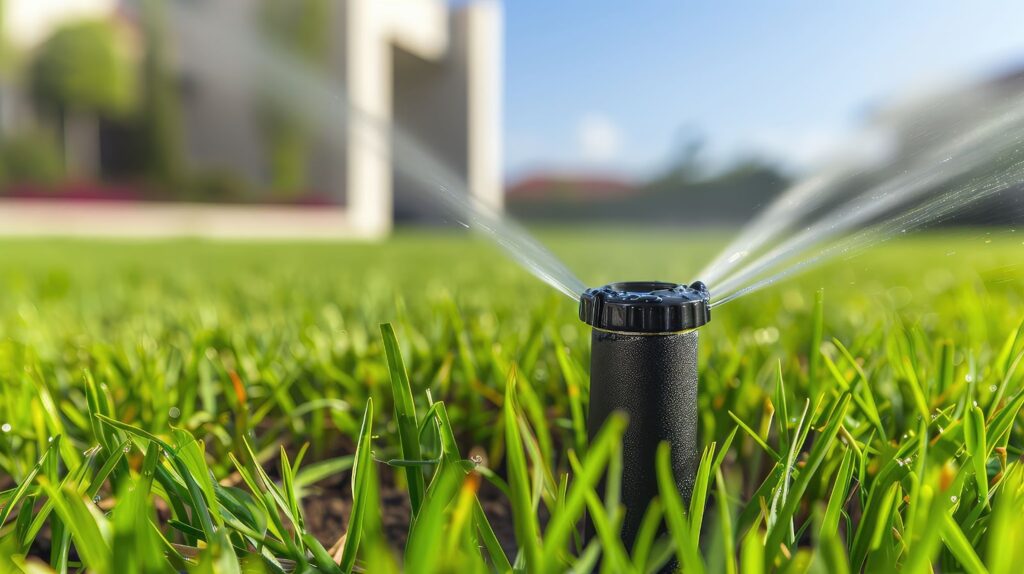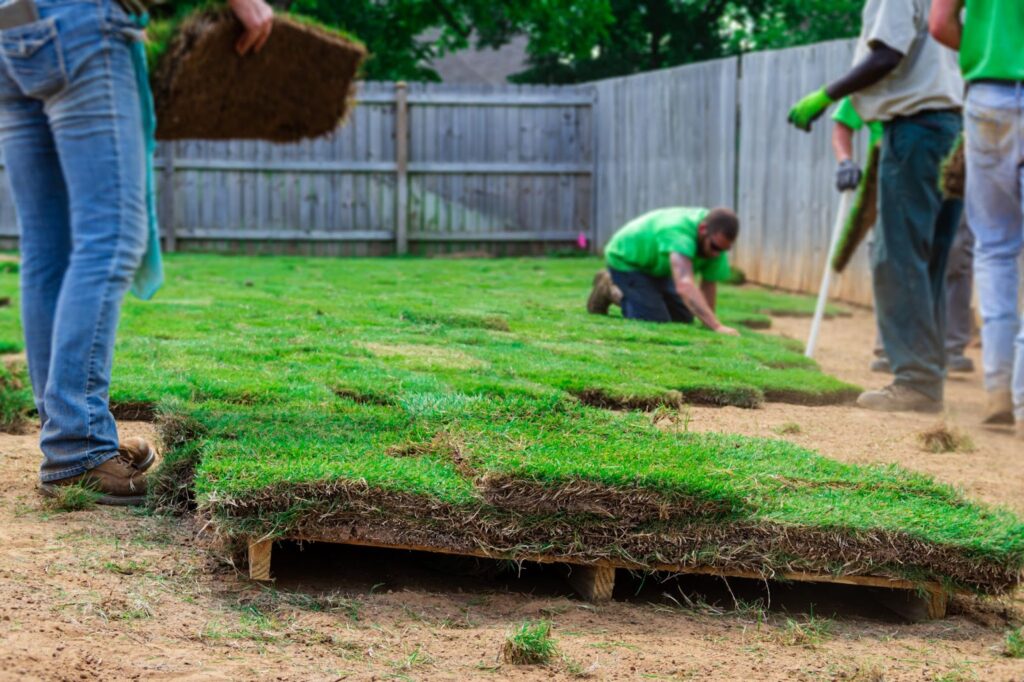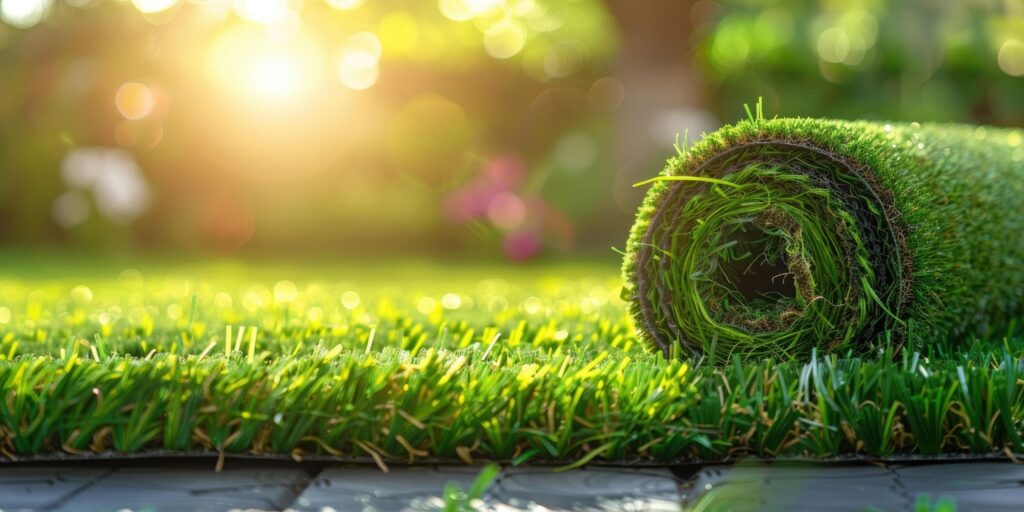Thinking about transforming your outdoor space with a lush, green carpet underfoot? Installing sod in Utah might be the perfect solution for turning your landscaping dreams into reality.
With immediate results and less wait time compared to seeding, sod installation is an increasingly popular choice among homeowners seeking quick and effective lawn transformations.
Utah’s diverse climate, from dry deserts to snowy mountain ranges, demands a specific approach to lawn care. When you choose sod, you opt for a mature turf that’s ready to flourish in these unique conditions. The key to a successful installation lies in selecting the right type of grass and preparing the soil meticulously to ensure that your new lawn takes root and thrives.
This guide will walk you through the essentials of preparing for sod installation, what to expect during the process, and how to care for your sod once it’s in place. Whether you’re enhancing your home’s front yard or upgrading a larger property, understanding the nuances of installing sod will help you achieve a vibrant lawn that enhances your property’s value and appeal.
Get ready to explore how a carefully planned sod project can transform your outdoor living space in Utah.
Planning and preparation
Before the first roll of sod ever touches your soil, thorough planning and preparation are essential. The success of installing sod in Utah hinges on several factors, starting with the selection of the right type of sod. Given Utah’s varied climate — from the arid basins to the snowy peaks — choosing a grass type that will thrive in your specific environment is crucial.
Grass types like Kentucky Bluegrass, Fescue, and Bermuda are popular choices in Utah for their resilience and ability to adapt to different temperatures and moisture levels. Consult with a local nursery or sod specialist to determine which grass best suits your area’s climate and your landscaping needs.
Once you’ve selected the appropriate type, the next step is preparing your yard for sod installation. This involves clearing the area of weeds, debris, and existing grass. Soil testing is also a wise move; it will tell you what nutrients your new lawn might need and help you adjust the soil composition.
Adding topsoil or compost to enrich the soil provides a healthier base for your sod, promoting faster root growth and a more resilient lawn.
The sod installation process
When the day comes to lay your new sod, the process needs to start early in the morning to avoid the heat of the day, which can stress the grass. Sod arrives in rolls or slabs, and installing it is labor-intensive work that requires careful handling to avoid damaging the tender grass.
The first step in the sod installation process is to layout the sod systematically. Begin along a straight edge, such as a driveway or sidewalk, to ensure your lines are straight, then work your way across the lawn, staggering the joints much like laying bricks. This helps prevent erosion and gaps in your new lawn.
It’s essential to lay the sod snugly against each other without overlapping or leaving gaps, as this affects how the grass knits together and takes root.
Once all the sod is in place, rolling the sod with a lawn roller will help eliminate air pockets and ensure good contact between the sod and the soil underneath, which is critical for root establishment.
After rolling the sod, the next crucial step is to water it thoroughly. This initial watering is vital to help the sod settle and to ensure the roots start to penetrate the soil beneath. Water generously, soaking the sod to a depth of several inches, which encourages deeper root growth and establishes a drought-resistant lawn.
Be sure to keep the new sod moist for the first few weeks, especially in hot or windy weather, to prevent the edges from drying out and shrinking away from each other. This consistent moisture will support the sod as it knits together into a seamless, healthy lawn.
Watering your new lawn
Proper watering immediately after installation is perhaps the most crucial step in establishing your new sod. The Utah climate can be unforgiving, with dry air and intense sunlight that can quickly dehydrate your new grass.
Start watering your lawn within 30 minutes after laying the sod. For the first two weeks, water the sod deeply at least twice a day — early morning and late afternoon — to keep it moist and encourage deep root growth. This intensive watering schedule helps the roots to establish quickly and reduces the stress on the new grass.
After the initial two weeks, you can gradually reduce the watering frequency but increase the depth of water application to foster deeper roots that enhance drought resistance. Always adjust your watering schedule based on rainfall, temperature, and humidity, since overwatering can be as detrimental as under-watering.

Long-term care and maintenance
After installing sod in Utah, ongoing care is essential to maintain a healthy and beautiful lawn. Within six to eight weeks, you should start a regular feeding program using a balanced fertilizer that promotes healthy growth without pushing the grass to grow too quickly, which can weaken it.
Regular mowing is also vital, but make sure not to remove more than one-third of the grass height in a single mowing. Keeping your mower blades sharp is crucial, as blunt blades may damage the grass and cause fraying, which makes the lawn more susceptible to diseases.
Weed control is another important aspect of maintaining your new lawn. Even though sod installation helps suppress weeds initially, vigilance is key to keeping your yard weed-free. Spot treat weeds as necessary, and consider pre-emergent herbicides if you find certain areas prone to weed invasion.
A quick sod installation recap
As you wrap up your sod installation project in Utah, take a moment to appreciate the transformation. Your once bare or patchy land has now blossomed into a robust and inviting green space. This new lawn boosts your home’s curb appeal and provides a refreshing outdoor area for family gatherings, relaxation, and play.
Remember, the work doesn’t stop with the last roll of sod laid down. Ensuring your lawn remains healthy and beautiful requires an ongoing commitment to proper care and maintenance.
Regular watering, timely fertilization, and consistent mowing are crucial to sustaining the lush appearance of your turf. Tackle any issues such as weeds or pests promptly to keep your lawn in top condition.
Enjoy the fruits of your labor — a lush, vibrant lawn that enhances your living space and brings joy to your outdoor activities. With the right care, your sodded lawn will continue to flourish, making it a worthwhile investment in your property.
Step outside, breathe in the fresh air, and relish the enhanced beauty of your landscaped yard, knowing you’ve laid the groundwork for years of outdoor enjoyment.

Attain the best sod in Utah with Monarch Sod
Their commitment to exceptional quality sod and expert advice makes them the perfect partner for achieving a lush, vibrant lawn. Whether navigating Utah’s varied weather or tackling challenging soil conditions, Monarch Sod is your dependable resource.
As you embark on your quest for the perfect lawn, remember that Monarch Sod is with you at every turn. From selecting the ideal sod to providing maintenance support, they are dedicated to helping you develop a resilient and attractive landscape.
Contact Monarch Sod at 801-701-8633 today and witness the transformation — a simple call can set you on the path to your dream lawn.
daftar situs gacor situs slot situs toto situs toto monperatoto kampungbet keluaran hk situs slot toto slot slot gacor kampungbet data macau rtp slot situs toto kampungbet situs hk bento4d toto slot slot terpercaya toto slot toto slot toto slot toto slot slot gacor toto slot toto slot link slot gacor situs slot gacor situs toto toto slot toto togel bento4d toto slot situs toto situs togel bento4d login toto slot slot online situs gacor










